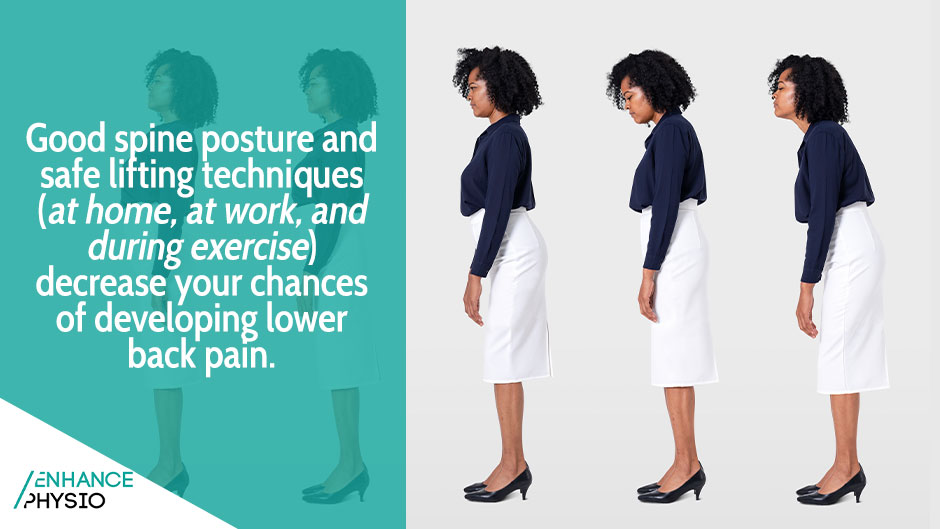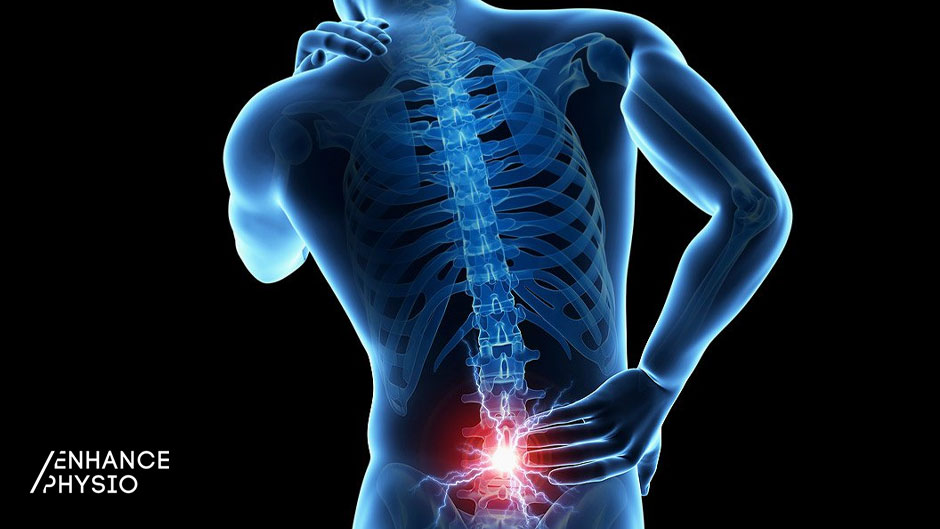The 2 main reasons people experience low back pain
- Prolonged sitting – e.g. office workers.
- Excessive bending and lifting – e.g. tradies and childcare workers.
The top 3 strategies to reduce your low back pain
- Move regularly – get up and move every 45 minutes
- Stretch in the opposite direction – 10 x 10second extension based exercises either in sitting, standing or laying on your stomach
- Strengthen your core and gluteal muscles, focusing on a posterior pelvic tilt. This will improve your posture, unload your back muscles and help to improve your manual handling technique and endurance.

Is physiotherapy effective for low back pain?
Physiotherapy is one of the most effective treatments for low back pain. There is a substantial amount of research to back up the techniques that we employ. Most low back pain cases respond well to manual therapy and an exercise programme. Manual therapy examples include massage, joint mobilisation, manipulations and myofascial release. These techniques help to reduce pain and restore movement. The exercise programme usually consists of range of motion and mobility exercises, trunk and leg muscle strengthening, and a progressive return to activities. Acupuncture, taping, and Transcutaneous Electrical Nerve Stimulation (TENS) are standard treatments that physiotherapists may use.How does a physiotherapist treat back pain?
To rule out more serious causes of back pain, your physiotherapist will examine you extensively. Various injuries can cause back pain, and treatment varies greatly depending on your diagnosis. The goal of physiotherapy treatment is to protect your damaged tissue while also accelerating muscle and ligament healing and looking at ways of preventing a recurrence. At Enhance Physio, we typically use the following techniques:- Mobilisation and manipulation of joints.
- Stretching of soft tissues and muscles.
- Exercises for stabilisation and strength.
- Back pain relief through postural correction.
Exercises to avoid if you have lower back pain
- Back squats People with chronic low back pain should avoid carrying weights completely.
- Standing toe touches It increases the risk of stress to the lower back's discs and ligaments as it causes increased extension of the lower back.
- Overhead or shoulder lifting of weights Lifting weights overhead while suffering from low back pain places undue strain on the spine and back muscles, increasing the risk of muscle spasms and ligament tears.
- Sit-ups This puts additional strain on the spine and aggravates back pain.
- Abdominal crunches This hyperextends the spine and ligaments, so it should be avoided.
- Leg lifts or leg raises This exercise requires a strong core and heavy strain on the back.
- Superman back extensions This position involves the most core and back muscles and causes the most stress. As a result, anyone experiencing even minor low back pain should avoid it entirely.

How do I know if my back pain is serious?
A sudden injury most commonly causes acute low back pain. The muscles and ligaments that support the back are the most commonly injured. Muscle spasms or a strain or tear in the muscles and ligaments are the most likely sources of the pain. The following neurological symptoms should be evaluated as soon as possible:- Loss of bladder or bowel control.
- Muscle weakness in the legs.
- Feeling of pins and needles (paraesthesia).
- Alterations in reflexes.
- Walking difficulties.
- Feeling of numbness (anaesthesia).

